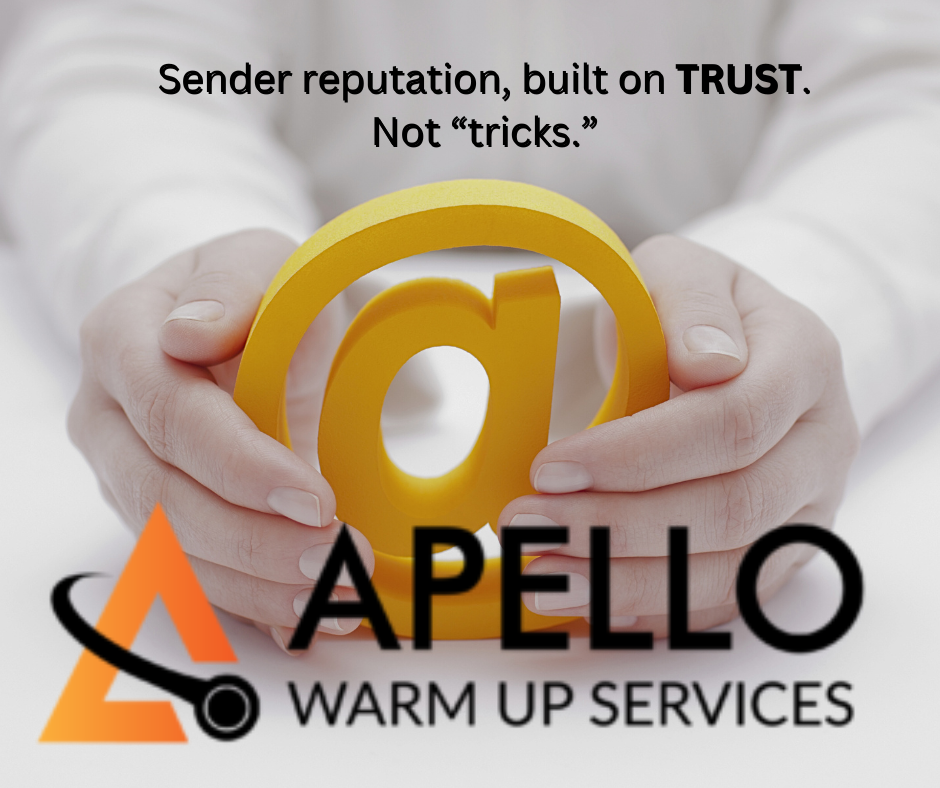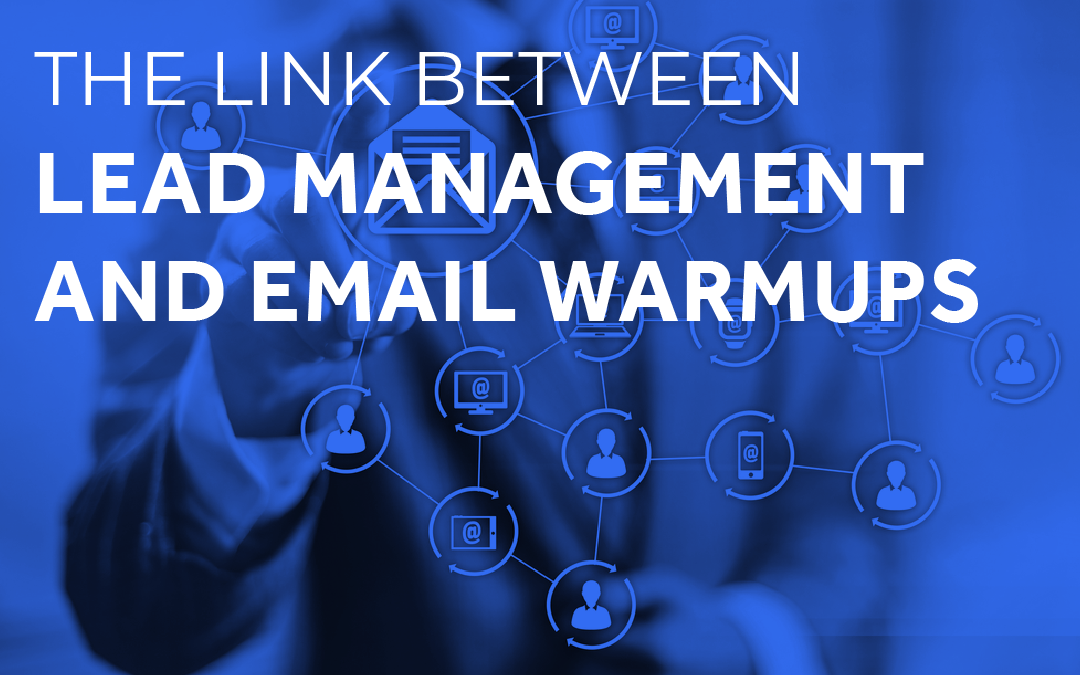You did everything right. You generated a list of hot leads who actually want what you’re selling. But when you send them that perfectly crafted first email, you get silence. What’s worse than silence? Knowing your email probably landed in a digital black hole: the spam folder. This is the frustrating reality where even the best plans for lead management and email warmups fall apart. Great lead management means you have a solid process to nurture potential customers. You’re ready to build relationships.
But you can’t build a relationship with someone who never even sees your message. This is why understanding lead management and email warmups together is no longer just an option; it’s the only way forward for successful email outreach.

Table of Contents:
- What’s the Point of Lead Management Anyway?
- The Giant Wall Your Leads Never See: The Spam Folder
- Connecting Lead Management and Email Warmups
- How Does Email Reputation Actually Work?
- Automated vs. Human Warmup Approaches
- The Apello Difference: Human-Powered Warmups
- Building a Rock-Solid Strategy for Lead Management and Email Warmups
- Conclusion
What’s the Point of Lead Management Anyway?
Let’s talk about lead management for a second. At its core, it is the process you use to track people who might become customers. It is about taking an interested email lead from a curious visitor to a happy, paying client.
This process often begins with lead gen, where you capture contact information through various marketing efforts. From there, your lead generation strategy flows into targeted email campaigns. Each email campaign is a step in building a connection and guiding the prospect.
Without a system, you’re just throwing things at a wall and hoping they stick. Leads get forgotten and follow-ups get missed. You’re leaving a lot of money on the table because of simple disorganization, which effective email marketing can prevent.
A good lead management process helps you understand your customer’s journey. It lets you send the right message at the right time through a well-planned cold email campaign. But all of this good work counts for nothing if the email system itself is working against you.
The Giant Wall Your Leads Never See: The Spam Folder
You’ve spent time and money on email lead generation. Your email is helpful and your offer is amazing. So why do your messages get sent to spam folders?
It is because email service providers like Gmail and Microsoft have one main job. They need to protect their users from actual spam and phishing attacks. To do this, they use complex algorithms and spam filters that analyze every email you send.
If you’re sending from a new email account or a new email domain, you have no history. Your sending reputation is zero. An email service provider sees you as an unknown sender and, to be safe, often routes your mail straight to spam, hurting your inbox placement and overall deliverability rates.
This is a huge problem for any cold emailing effort. The goal is to avoid spam folders entirely. Getting this right is critical for the success of your cold outreach.
Connecting Lead Management and Email Warmups

So how do you build a good sending reputation from scratch? This is where an email warm-up comes into the picture. It is the process of slowly building trust with each service provider by showing them you’re a legitimate sender that people want to hear from.
The classic email warm-up process involves sending a small number of cold emails and gradually increasing the sending volume. You hope for positive interactions, like opens and replies, which signals to a spam filter that your messages are welcome. But this warm-up process can be painfully slow and unpredictable, taking weeks or even months.
This old method just does not cut it anymore for businesses that need to scale their email lead generation. You need a faster, more effective way to build that trust. This is exactly what innovative solutions like Apello Email Warmup Services are built to fix, making your entire lead management process actually work.
How Does Email Reputation Actually Work?
Your sender reputation is not one single score. It is made up of a few different parts that all work together. Understanding these pieces helps you see why your emails might be having trouble and how to improve email deliverability.
Domain and IP Reputation
Think of your email domain, like yourcompany.com, as your home address. Email service providers keep a reputation score on this address. Every email you send is a reflection on your home, for better or worse.
Your IP address is like the specific car you use to deliver your mail. Shared hosting plans mean you might be sharing an IP address with someone who sends spam, damaging your own efforts. A dedicated IP address gives you your own delivery car, so its domain reputation is entirely up to you.
Negative actions like high bounce rates or spam complaints quickly damage these reputations. Once your positive sender reputation is shot, it is very difficult to repair the damage. That is why you have to get it right from the beginning by warming up your inbox correctly.
Engagement Metrics are Gold
What do email providers value more than anything? They want to see that real humans are happily interacting with your emails. This is what separates a positive sender from spammers.
The most powerful signals you can send are positive engagement metrics. We are talking about high open rates, click-through rates, and, most importantly, replies. According to information from Klaviyo, these positive interactions tell mailbox providers that their users want your mail.
When someone takes the time to reply to your email or marks it as important, that is a huge vote of confidence. It tells Gmail you are not just another blast from a faceless company. This is why just managing your email list is not enough; you must generate genuine engagement to achieve a high sender reputation.
Automated vs. Human Warmup Approaches
When it comes to email warm-ups, you generally have two paths: using an automated warm-up tool or partnering with a human-powered warmup service. Many warm-up tools use bots to create a network of fake email accounts sending messages back and forth. However, providers are getting better at spotting these artificial patterns.
A human-powered approach focuses on generating authentic interactions, which builds a more durable reputation. This method is often superior for a critical cold email campaign that cannot afford to fail. Let’s compare the two approaches.
| Feature | Automated Warm-up Tools | Human-Powered Warmup Service (like Apello) |
|---|---|---|
| Interaction Type | Automated emails sent between bot-controlled inboxes. | Real people engage with your emails from their own accounts. |
| Signal Quality | Lower quality, as algorithms can detect bot-like patterns. | Highest quality, as interactions are genuinely human. |
| Reputation Durability | Can be fragile; reputation may drop once the tool is turned off. | Builds a robust and long-lasting positive sender reputation. |
| Speed | Can be fast initially but may hit a ceiling. | Extremely fast and effective at building trust quickly. |
| Risk of Detection | Increasingly higher as spam filters become more advanced. | Virtually zero risk of being flagged as artificial activity. |
The Apello Difference: Human-Powered Warmups

Many email warm-up tools rely on that automated warm-up process. They set up a network of fake email accounts to send messages back and forth. But email providers are smart, and they are getting better at spotting these automated patterns.
This is where Apello Email Warmup Services changes the entire game. They do not use bots. Apello is the only live call center that is dedicated to email warm-ups for your business.
Here is how it is different. Real people from Apello will actually contact your leads. They guide your prospects to find your emails in their inbox, open them up, and reply to them. They even help get your address marked as a favorite, creating the strongest positive signals possible for your email platform.
Instead of relying on fake bot engagement, you’re getting real, authentic human interaction on your emails. This method accelerates your reputation building from a slow crawl to a full-on sprint. It means you can scale your email volume with confidence much faster than you ever thought possible, knowing your emails land where they should.
Building a Rock-Solid Strategy for Lead Management and Email Warmups
Okay, so you understand the problem and a potential solution. How do you put it all together into a strategy that works? Here are a few steps to build a solid foundation for your email infrastructure.
Step 1: Fortify Your Technical Foundation
First, get your technical house in order. You need to authenticate your domain so email providers can verify you are who you say you are. This technical setup is non-negotiable for achieving high deliverability rates.
This involves setting up your DNS records. These are like your email’s official ID badge and are critical for your email service.
- SPF (Sender Policy Framework): This record lists the mail servers authorized to send email on behalf of your domain. It prevents others from spoofing your domain.
- DKIM (DomainKeys Identified Mail): This adds a digital signature to your emails, allowing the receiving server to verify that the message was not altered in transit.
- DMARC (Domain-based Message Authentication, Reporting & Conformance): This policy tells receiving servers what to do with emails that fail SPF or DKIM checks. It also provides reports on your email activity.
You can also use tools like Google Postmaster to monitor your domain reputation directly with one of the largest service providers. Proper setup here tells every email service provider you are a serious and legitimate sender.
Step 2: Curate Your Email List and Content
Second, stop blasting your entire list with the same generic message. Segment your leads into smaller, more targeted groups based on their interests or actions. This allows you to send more relevant messages, which naturally increases engagement.
Next, focus on your email content and subject lines. Even with perfect deliverability, a boring or pushy email will get ignored or marked as spam. Write emails that help people, answer their questions, and start conversations instead of just selling.
Maintaining a clean email list is also crucial. Regularly remove inactive subscribers and invalid addresses. Sending to a bad list results in high bounce rates and spam complaints, which will destroy your reputation.
Step 3: Execute a Smart Warm-up Strategy
Finally, you need to integrate a human-touch warmup process from the start. A strategy for your lead management and email warmups must include a plan to build sender reputation actively. There are many warm-up strategies, but choosing the right one is important. For businesses engaged in serious cold emailing, relying solely on automated email warm-up tools can be risky. Integrating a human element provides a layer of authenticity that bots cannot replicate. This is what creates a truly high sender reputation.
When selecting a warmup service, look for one that offers transparency and strong customer support. Some providers may even offer a free trial to let you experience their service. The goal is to build a foundation of trust that allows your email campaigns to scale effectively.

Conclusion
You can have the most advanced lead management system and the most amazing product in the world. But none of that matters if your messages are invisible to your prospects. Your emails getting stuck in spam is not just a technical problem; it is a business growth problem.
You have to see that effective lead management and email warmups are not separate tasks. They are deeply connected parts of a single, successful outreach strategy. Neglecting your email warm-up process means your lead management efforts will ultimately fail.
If you’re tired of guessing why your emails are not landing in the inbox, it is time to get proactive. Apello Email Warmup Services offers a completely different approach by using real human conversations to build your sender reputation at record speed. Talk to an expert today and find out how to make sure your messages get seen, opened, and answered.

